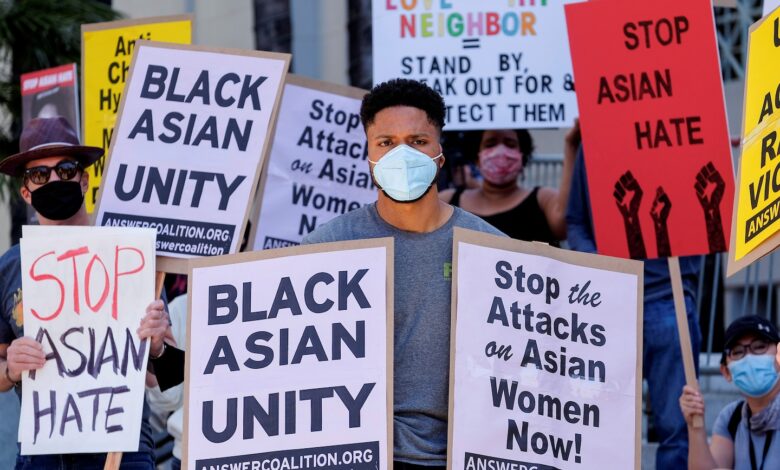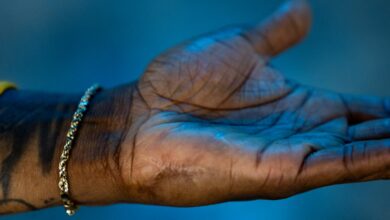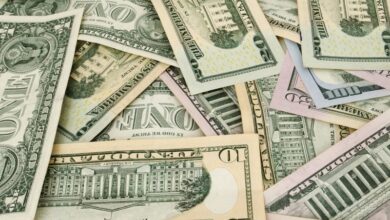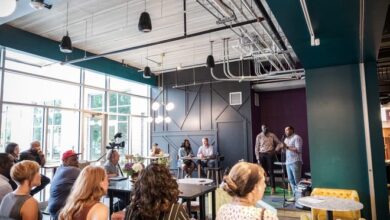The unexpected alliance forged after the Rodney King verdict

Yet, building on a longer history of Afro-Asian alliances that remained hidden in the national news coverage, the 1992 uprising offered new opportunities for Korean and Black American solidarities. The events in Los Angeles nearly 30 years ago have new salience in recent months.
In March, Black, Latinx and White Angelenos gathered in Koreatown for a rally, chanting “Stop Asian Hate!” and “Remember Atlanta!” in chorus with Korean and other Asian Americans. While we mark the 29th anniversary of L.A.’s “Black-Korean riots,” we’ve also seen the improbable: Korean and other Asian ethnics putting their bodies on the line for the Black Lives Matter revolution while Blacks do the same for Asian American elders’ safe passage home.
Arguably no other Afro-Asian relationship has been as tense and painful as that between Korean and Black Americans. Yet, symbolic alliance-building began historically in South Korea and solidified in the wake of the Los Angeles unrest. In both cases, a key reason for the precarious progress has been both groups’ gradual recognition of White supremacy, not each other, as the cause of their problems.
Both sides first “met” in the 1940s on the Korean Peninsula under the fraught circumstances of U.S. imperialism. In 1945 the United States was eager to capitalize on its World War II victory by sending its mostly White and Black troops to “rescue” Koreans from their former Japanese colonizers. As the United States used the peninsula’s southern region to meet both military and capitalist imperatives, Korean residents around the bases and Black American military personnel initially harbored mutual prejudices.
Koreans had long been socialized by their pre-modern class hierarchy in which the pale were elites while brown-skinned Koreans were peasants. Black Americans themselves had long been socialized by derision of Korea and its people as poor, effeminate and inscrutable, all of which were seemingly affirmed by their “desperate” dependence on the United States during the postwar era.
During the next four decades, conflict was rife. Koreans learned of U.S. soldiers massacring civilians, committing land infractions and raping and murdering Korean women during the occupation. In the early 1970s, Koreans who ran businesses in the military camp towns would at times get in mob-like fights with Black soldiers, many radicalized by the Black Power movement, who rampaged through the bars and restaurants they deemed racist.
Yet, somehow Koreans and Black Americans also recognized themselves in each other.
Ivory Perry, a prominent Black American activist from St. Louis, for instance, traced the start of his organizing to his time at Camp Gifu, Japan and in the Korean War: “I’m over there trying to kill them for something that I don’t know what I’m shooting for.” As he found the Japanese and Koreans “refreshingly nonracist” he concluded White supremacy was a “primarily historical national phenomenon and not human nature” and his fight was “here in America.”
Similarly, an interview with a 1950s South Korean government inspector, Roh Bock-ki, revealed Koreans saw parallels between U.S. oppression of Korea and a U.S. military that had only recently been officially integrated (and in which segregation had continued informally). As he shared, “There were these soccer games between the soldiers and the people near the base. … I noticed that Whites made their own separate team of only Whites. But the Blacks cheered for the Korean people …[b]ecause we’re the weak nation … because they knew … they suffered like us.”
The burning of Los Angeles, including Koreatown, in the aftermath of the 1992 verdict exposed the racial powder keg of the 1980s in which the two met. Korean immigrants faced barriers in the mainstream labor market due to issues like language discrimination and non-U.S. credentials. Anxiously focused on making a living, they funneled into small business ownership in and near Black inner cities. Besieged not just by economic and educational neglect but by Reagan’s overpolicing and mass incarceration tied to the war on drugs, Blacks rightfully resented yet another non-Black group coming in to profit off their community. As Blacks themselves were typically denied small business loans and as mutual stereotypes and language barriers abounded, animosities and tensions intensified.
Yet, as L.A. smoldered, Koreatown activists would organize with Black leaders and communities to cultivate relationships to temper conflict. While honoring Harlins’s life, Korean American social workers and journalists shared that in the same period of 1990-92, Black and Latino gunmen had shot to death 25 of their merchants — including three in one day. Yet most of these were met with police indifference. All could agree that White supremacy fueled this type of police response.
As the church is an institution sacred to both communities, Korean congregations began to fund not just Black student scholarships but Black pastors’ trips to South Korea to learn more of its culture and history, including stories of Black troops stationed there. These trips allowed Black Americans, like Ivory Perry, to ponder their own role in the Korean homeland’s collective suffering and their own conditioning by anti-Asian antipathy. It also helped congregations recognize that Blacks’ presence there in the first place was an outcome of a white supremacist imperialism, one that taught Koreans a U.S. version of anti-Blackness.
Korean immigrants also recognized their shared plight with Black communities when the U.S. state completely abandoned both of their communities during and after the L.A. uprising. “Justice for King,” “Justice For All Minorities” and “Mutual Respect” became the rallying cry of both the less progressive Korean small business associations and churches, and the radical Koreatown organizations alike. At times, joint efforts inevitably lost their luster, like the Black-Korean Alliance (BKA), but for good reason. The BKA, for example, realized they had to stop talking and start tackling the White capitalist roots of the uprising.
To be sure, growing physical distance has also helped lower the racial temperature. Soon after the unrest, Korean Americans took a loss or sold their inner-city stores to other non-Whites while Blacks began their movement out of then-South Central. In the immediate aftermath of 1992 and of early 1990s’ Brooklyn, Black residents realized the respective torching and boycotting of Korean-owned markets hampered ready access to food.
This tumultuous history has paved the way for the relative calm between Black and Korean Americans who stand in solidarity today. White supremacy came out of the 1992 uprising still intact, but once the smoke cleared, both of these demographics could see it more clearly as the problem. The mutual organizing and solidarity against White supremacy is key to continuing the simpatico relationships that they started and to protecting each other from the torrent of racism that continues to rain down on the both of them.
























































